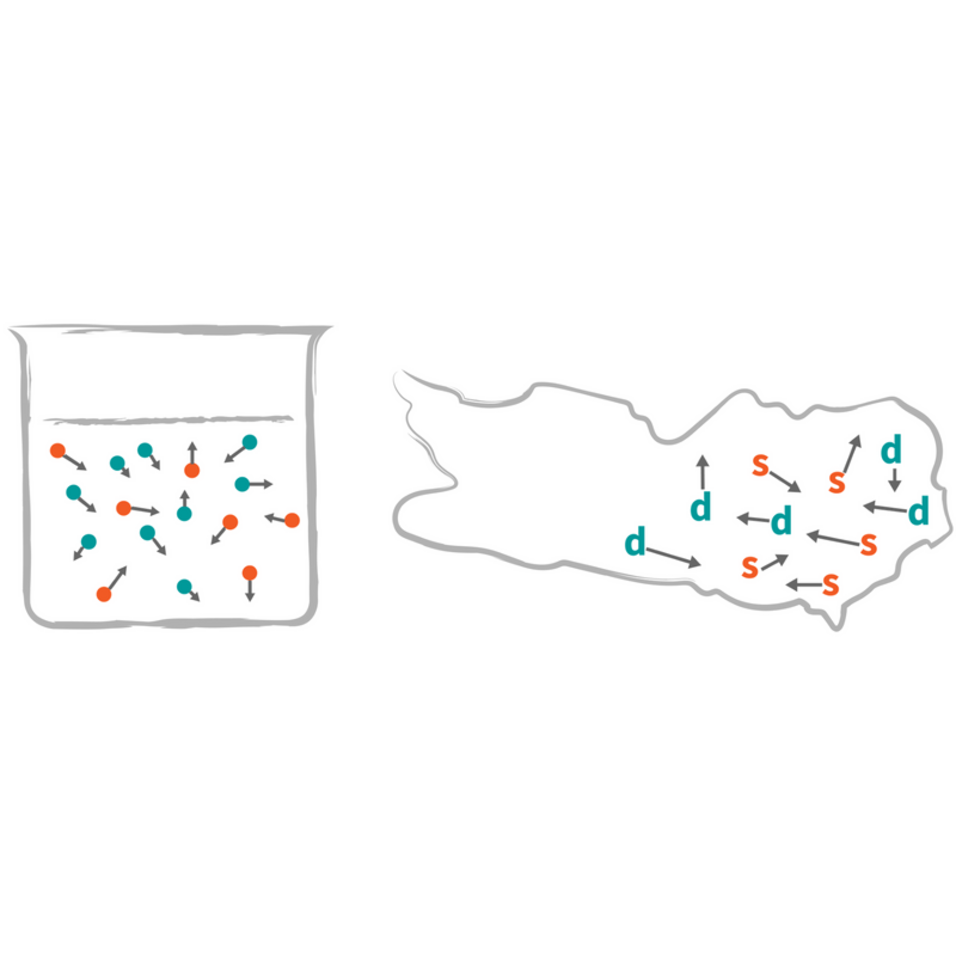In physics, the movement of particles over time and space is called diffusion. Models of physical diffusion can also be applied to describe the movement of other things – even those that have nothing to do with physics at first sight. "The term interdisciplinary diffusion means using methods from physics to describe the spread of animals, diseases, rumours – or, in our case, languages. This approach allows us to study large amounts of data and play with different scenarios", explains the study author Katharina Prochazka, a physicist and linguist.
"Microscopic" view of language movement
The interdisciplinary study is based on the principle of cellular automata which is combined here for the first time with detailed empirical data. In this method, the study area is divided into small cells which are all viewed individually as under a microscope. As a result, it is possible to capture changes in language movement on a very small scale. At the same time, the whole region is recorded and described—an advantage compared to other approaches which often only consider the percentage of speakers in the population and offer no information about spatial distribution.
Interaction as the driving force
In their research, Katharina Prochazka and Gero Vogl followed the language movement in Southern Carinthia, Austria, during the periods 1880-1910 and 1971-2001. In this region, two languages – Slovenian and German – interact with each other in an exceptionally well-documented linguistic "ecosystem". "Our computer simulations show that interaction with other speakers of the same language is the driving force for language spread and retreat. The number of speakers of a language in the same village and the neighbourhood is, therefore, the most important factor. We were able to demonstrate and quantify this using physical methods", reports Katharina Prochazka. The model developed in the study thus contributes to the fundamental understanding of language shift which happens in many places around the world and mostly affects minority languages.
Publication in "PNAS":
Quantifying the driving factors for language shift in a bilingual region, Katharina Prochazka, Gero Vogl, PNAS (2017),
DOI: 10.1073/pnas.1617252114
For more information, have a look at the project website.
The official press release can be found here.

